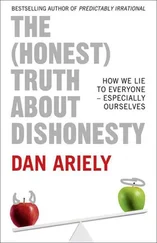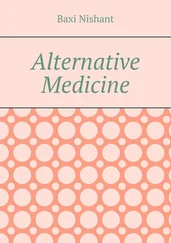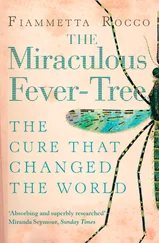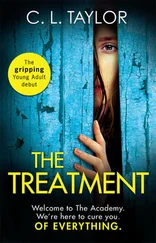The simple solution would have been to alter the sailors’ diet, but scientists had yet to discover vitamin C and were unaware of the importance of fresh fruit in preventing scurvy. Instead, physicians proposed a whole series of other remedies. Bloodletting, of course, was always worth a try, and other treatments included the consumption of mercury paste, salt water, vinegar, sulphuric acid, hydrochloric acid or Moselle wine. Another treatment required burying the patient up to his neck in sand, which was not even very practical in the middle of the Pacific. The most twisted remedy was hard labour, because doctors observed that scurvy was generally associated with lazy sailors. Of course, the doctors had confused cause and effect, because it was scurvy that caused sailors to be lazy, rather than laziness that made sailors vulnerable to scurvy.
This array of pointless remedies meant that maritime ambitions during the seventeenth and eighteenth centuries continued to be blighted by deaths from scurvy. Learned men around the world would fabricate arcane theories about the causes of scurvy and debate the merits of various cures, but nobody seemed capable of stopping the rot that was killing hundreds of thousands of sailors. Then, in 1746, there came a major breakthrough when a young Scottish naval surgeon called James Lind boarded HMS Salisbury . His sharp brain and meticulous mind allowed him to discard fashion, prejudice, anecdote and hearsay, and instead he tackled the curse of scurvy with extreme logic and rationality. In short, James Lind was destined to succeed where all others had failed because he implemented what seems to have been the world’s first controlled clinical trial .
Lind’s tour of duty took him around the English Channel and Mediterranean, and even though HMS Salisbury never strayed far from land, one in ten sailors showed signs of scurvy by the spring of 1747. Lind’s first instinct was probably to offer sailors one of the many treatments popular at the time, but this was overtaken by another thought that crossed his mind. What would happen if he treated different sailors in different ways? By observing who recovered and who deteriorated he would be able to determine which treatments were effective and which were useless. To us this may seem obvious, but it was a truly radical departure from previous medical custom.
On 20 May Lind identified twelve sailors with similarly serious symptoms of scurvy, inasmuch as they all had ‘putrid gums, the spots and lassitude, with weakness of their knees’. He then placed their hammocks in the same portion of the ship and ensured that they all received the same breakfast, lunch and dinner, thereby establishing ‘one diet common to all’. In this way, Lind was helping to guarantee a fair test because all the patients were similarly sick, similarly housed and similarly fed.
He then divided the sailors into six pairs and gave each pair a different treatment. The first pair received a quart of cider, the second pair received twenty-five drops of elixir of vitriol (sulphuric acid) three times a day, the third pair received two spoonfuls of vinegar three times a day, the fourth pair received half a pint of sea water a day, the fifth pair received a medicinal paste consisting of garlic, mustard, radish root and gum myrrh, and the sixth pair received two oranges and a lemon each day. Another group of sick sailors who continued with the normal naval diet were also monitored and acted as a control group.
There are two important points to clarify before moving on. First, the inclusion of oranges and lemons was a shot in the dark. Although there had been a few reports of lemons relieving symptoms of scurvy as far back as 1601, late-eighteenth-century doctors would have viewed fruit as a bizarre remedy. Had the term ‘alternative medicine’ existed in Lind’s era, then his colleagues might have labelled oranges and lemons as alternative, as they were natural remedies that were not backed by a plausible theory, and thus they were unlikely to compare well against the more established medicines.
The second important point is that Lind did not include bloodletting in his trial. Although others may have felt that bloodletting was appropriate for treating scurvy, Lind was unconvinced and instead he suspected that the genuine cure would be related to diet. We shall return to the question of testing bloodletting shortly.
The clinicial trial began and Lind waited to see which sailors, if any, would recover. Although the trial was supposed to last fourteen days, the ship’s supply of citrus fruits came to an end after just six days, so Lind had to evaluate the results at this early stage. Fortunately, the conclusion was already obvious, for the sailors who were consuming lemons and oranges had made a remarkable and almost complete recovery. All the other patients were still suffering from scurvy, except for the cider drinkers who showed slight signs of improvement. This is probably because cider can also contain small amounts of vitamin C, depending on how it is made.
By controlling variables such as environment and diet, Lind had demonstrated that oranges and lemons were the key to curing scurvy. Whilst the numbers of patients involved in the trial were extremely small, the results he obtained were so striking that he was convinced by the findings. He had no idea, of course, that oranges and lemons contain vitamin C, or that vitamin C is a key ingredient in the production of collagen, but none of this was important — the bottom line was that his treatment led to a cure. Demonstrating that a treatment is effective is the number-one priority in medicine; understanding the exact details of the underlying mechanism can be left as a problem for subsequent research.
Had Lind been researching in the twenty-first century, he would have reported his findings at a major conference and subsequently published them in a medical journal. Other scientists would have read his methodology and repeated his trial, and within a year or two there would have been an international consensus on the ability of oranges and lemons to cure scurvy. Unfortunately, the eighteenth-century medical community was comparatively splintered, so new breakthroughs were often overlooked.
Lind himself did not help matters because he was a diffident man, who failed to publicize and promote his research. Eventually, six years after the trial, he did write up his work in a book dedicated to Commander Anson, who had famously lost over 1,000 men to scurvy just a few years earlier. Treatise on the Scurvy was an intimidating tome consisting of 400 pages written in a plodding style, so not surprisingly it won him few supporters.
Worse still, Lind undermined the credibility of his cure with his development of a concentrated version of lemon juice that would be easier to transport, store, preserve and administer. This so-called rob was created by heating and evaporating lemon juice, but Lind did not realize that this process destroyed vitamin C, the active ingredient that cured scurvy. Therefore, anybody who followed Lind’s recommendation soon became disillusioned, because the lemon rob was almost totally ineffective. So, despite a successful trial, the simple lemon cure was ignored, scurvy continued unabated and many more sailors died. By the time that the Seven Years War with France had ended in 1763, the tallies showed that 1,512 British sailors had been killed in action and 100,000 had been killed by scurvy.
However, in 1780, thirty-three years after the original trial, Lind’s work caught the eye of the influential physician Gilbert Blane. Nicknamed ‘Chillblain’ because of his frosty demeanour, Blane had stumbled upon Lind’s treatise on scurvy while he was preparing for his first naval posting with the British fleet in the Caribbean. He was impressed by Lind’s declaration that he would ‘propose nothing dictated merely from theory; but shall confirm all by experience and facts, the surest and most unerring guides’. Inspired by Lind’s approach and interested in his conclusion, Blane decided that he would scrupulously monitor mortality rates throughout the British fleet in the West Indies in order to see what would happen if he introduced lemons to the diet of all sailors.
Читать дальше











